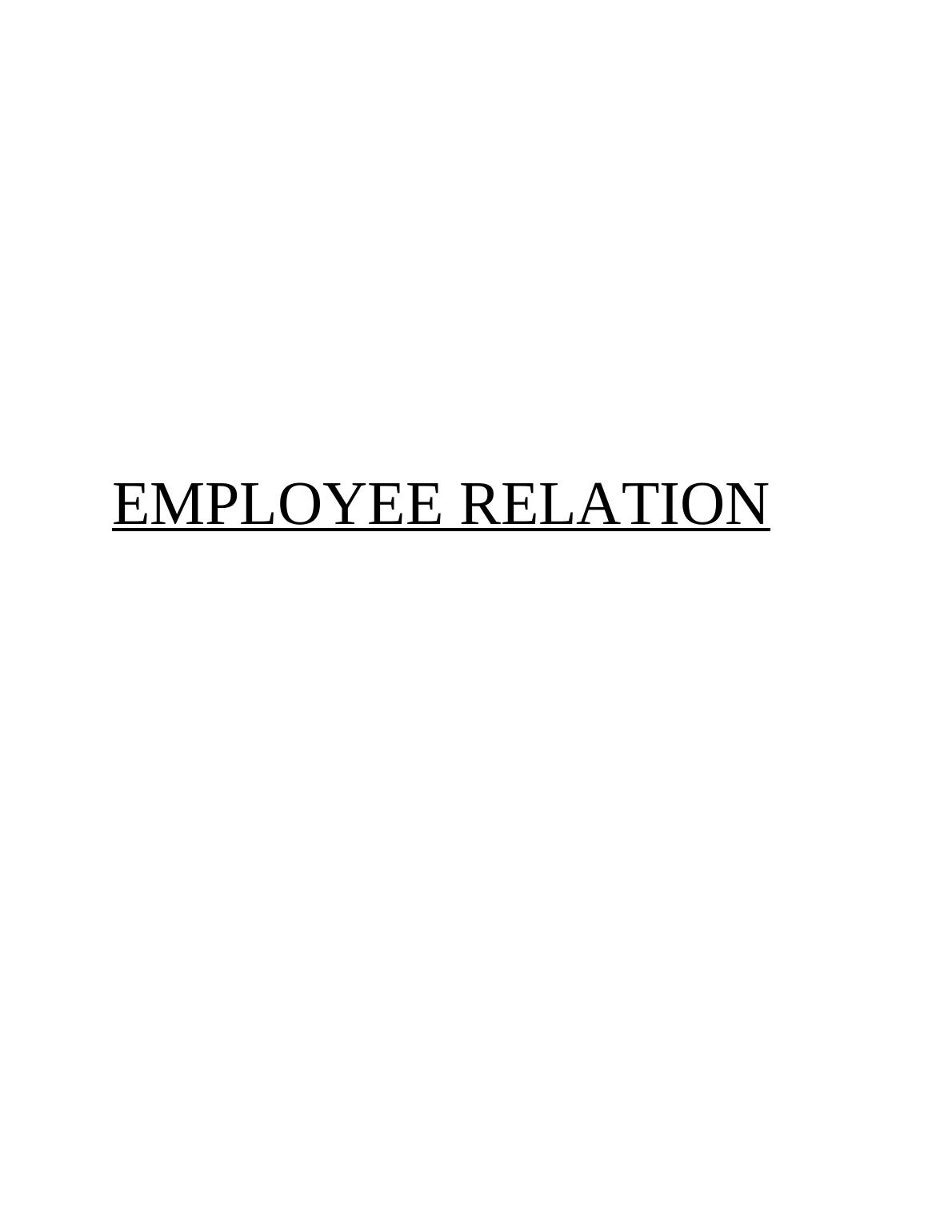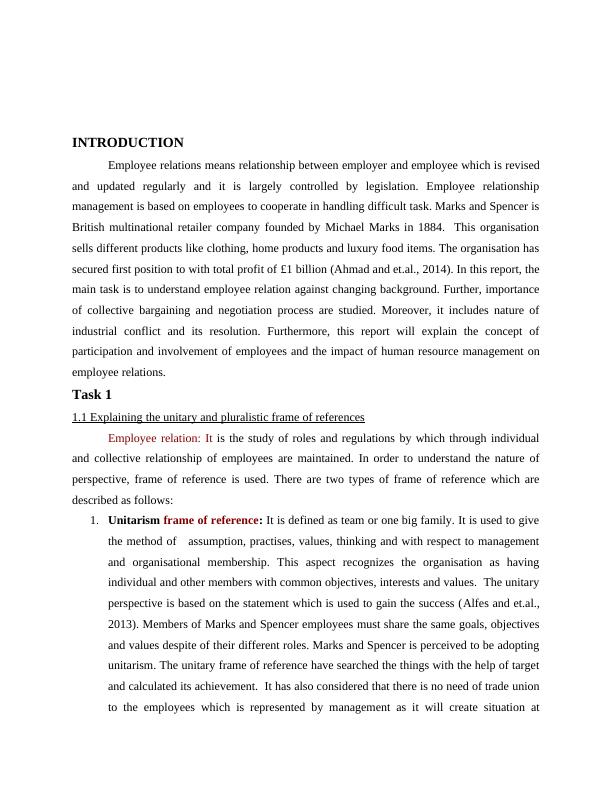Employee Relation in Marks and Spencer
Added on 2020-07-22
19 Pages6010 Words60 Views
EMPLOYEE RELATION

Table of Contents

INTRODUCTIONEmployee relations means relationship between employer and employee which is revisedand updated regularly and it is largely controlled by legislation. Employee relationshipmanagement is based on employees to cooperate in handling difficult task. Marks and Spencer isBritish multinational retailer company founded by Michael Marks in 1884. This organisationsells different products like clothing, home products and luxury food items. The organisation hassecured first position to with total profit of £1 billion (Ahmad and et.al., 2014). In this report, themain task is to understand employee relation against changing background. Further, importanceof collective bargaining and negotiation process are studied. Moreover, it includes nature ofindustrial conflict and its resolution. Furthermore, this report will explain the concept ofparticipation and involvement of employees and the impact of human resource management onemployee relations. Task 11.1 Explaining the unitary and pluralistic frame of referencesEmployee relation: It is the study of roles and regulations by which through individualand collective relationship of employees are maintained. In order to understand the nature ofperspective, frame of reference is used. There are two types of frame of reference which aredescribed as follows:1.Unitarism frame of reference: It is defined as team or one big family. It is used to givethe method of assumption, practises, values, thinking and with respect to managementand organisational membership. This aspect recognizes the organisation as havingindividual and other members with common objectives, interests and values. The unitaryperspective is based on the statement which is used to gain the success (Alfes and et.al.,2013). Members of Marks and Spencer employees must share the same goals, objectivesand values despite of their different roles. Marks and Spencer is perceived to be adoptingunitarism. The unitary frame of reference have searched the things with the help of targetand calculated its achievement. It has also considered that there is no need of trade unionto the employees which is represented by management as it will create situation at

workforce to strengthen the message. In this perspective, management providesconfidence and good work.2.Pluralistic frame of reference: In pluralism, Marks and Spencer is recognized as it isformed by different teams each of which has official loyalties. Trade union andmanagement are two major sub-groups of pluralistic perspective. In pluralism, themanagement is confronted by Marks and Spencer which do not accept its rights tomanage (Allen, Ericksen and Collins, 2013). Its main role is to manage conflicts viamechanism which emphasize the achievement of success. It focuses less towardsenforcing and controlling more towards influence and coordination. In this frame, M & S makes different groups. Every group respects its leader and has its ownloyalty. The main sub groups of this reference are trade union and management.1.2 Impact of trade unionism on employees relationshipTrade union is an organisation of employees which comes together to achieve theircommon appeal like improving safety trends, regular wages etc. The main aim of trade union isto provide better payment and working conditions to the employees. From historical perspective,Illustration 1: Frame of reference(Source:Ahmad and et.al, 2014)

End of preview
Want to access all the pages? Upload your documents or become a member.
Related Documents
Employment Relations in Asialg...
|5
|1220
|336
Employee Relation: Significance and Strategies for Better Relationslg...
|14
|3579
|176
Employee Relation Assignment Samplelg...
|14
|4543
|56
Pluralistic and Unitary Frames of Employees Relationship - Reportlg...
|18
|4942
|29
Employee Relations: Business Assignmentlg...
|15
|3958
|89
Employee Relations INTRODUCTIONlg...
|15
|5505
|118
